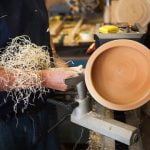How much does it cost to refinish woodwork? Whether it’s cabinets, floors, or furniture, the process of refinishing woodwork is an essential part of maintaining the aesthetic appeal of a space.
The cost of refinishing woodwork can vary based on several factors, including the size of the project, type of wood, and additional services required. In this article, we will explore the importance of woodwork refinishing and its impact on the overall aesthetic of a space, as well as provide a detailed breakdown of the average costs involved.
Woodwork refinishing is not just about restoring the beauty of wood surfaces; it also plays a significant role in enhancing the overall aesthetic appeal of a space. Whether it’s bringing new life to old furniture or revitalizing worn-out cabinetry, refinishing woodwork can transform the look and feel of any room.
From adding warmth and character to a space to increasing its resale value, investing in quality woodwork refinishing can have a lasting impact on the overall aesthetics of a home or business.
The cost of refinishing woodwork can be influenced by various factors, including the size and scope of the project, as well as the type and condition of the wood being refinished. Additionally, factors such as labor costs, material expenses, and any additional services required can also contribute to the overall cost. It’s essential to understand these cost-affecting factors before embarking on a woodwork refinishing project in order to determine an accurate budget and ensure satisfactory results.
What Is Woodwork Refinishing
Woodwork refinishing involves the process of restoring and enhancing the appearance of wood surfaces, such as cabinets, floors, and furniture. This important maintenance task not only improves the overall aesthetic of a space but also helps to prolong the lifespan of the woodwork. The key components of woodwork refinishing include sanding, staining, and sealing, all of which contribute to achieving a desired look and level of protection.
Sanding
Sanding is a crucial step in the woodwork refinishing process as it involves removing any existing finish or imperfections from the surface of the wood. This step is essential for creating a smooth and clean canvas for the subsequent stages of refinishing. The cost associated with sanding may vary depending on the size and condition of the woodwork, as well as whether any additional tools or equipment are needed for more intricate or challenging areas.
Staining
Once the wood has been properly sanded, staining can be applied to enhance its natural color or to achieve a specific shade that complements the overall design scheme. Staining also provides an added layer of protection to the wood by penetrating its surface. The cost of staining will depend on factors such as the type and quality of stain selected, as well as whether any custom color matching is required.
Sealing
The final stage of woodwork refinishing involves sealing or applying a protective finish to safeguard the wood against moisture, stains, and general wear and tear. This step not only contributes to the visual appeal but also serves as a barrier that helps maintain the integrity of the wood over time.
The cost associated with sealing may vary based on factors such as the type of sealant used, application method, and whether multiple coats are necessary for optimal protection against daily use.
Factors Affecting Cost
When considering the cost of refinishing woodwork, it’s essential to understand the factors that can influence the overall price. The size of the project is a significant determinant, as larger surfaces will require more materials and labor. Additionally, the type of wood being refinished plays a crucial role in cost determination. Exotic or rare woods may be more expensive to refinish due to their unique characteristics and specific treatment requirements.
Another factor that affects the cost of woodwork refinishing is the additional services required. This can include repairs to damaged wood, color matching for a cohesive look, or custom finishes for a personalized touch. These extra services can increase the overall cost but are often necessary to achieve the desired result.
In addition to these factors, geographical location can also impact pricing due to variations in labor costs and market demand. To determine how much does it cost to refinish woodwork in your area, it’s advisable to get multiple quotes from reputable professionals in your region.
- Size of the project
- Type of wood
- Additional services required
- Geographical location
Ultimately, understanding these influencing factors is crucial for homeowners considering woodwork refinishing. By taking into account the size of the project, type of wood, additional services required, and geographical location, individuals can make informed decisions about their refinishing investment.
Average Cost Breakdown
When it comes to refinishing woodwork, the cost can vary depending on the type of woodwork being refinished. For cabinets, the average cost ranges from $1,500 to $4,000, while refinishing hardwood floors can cost anywhere from $3 to $8 per square foot. As for furniture, the cost can range from $150 to $300 per piece, depending on its size and intricacy.
It is essential to consider the size of the project when estimating the cost of woodwork refinishing. Larger projects will naturally incur higher costs due to the amount of materials and labor required. Additionally, special finishes or custom designs may also increase the overall cost. The type of wood being refinished also plays a significant role in determining costs because some woods are more challenging to work with than others.
Another factor that affects the cost of woodwork refinishing is whether additional services are required. For example, if there is damage that needs to be repaired or color matching needed for touch-ups, this will add to the overall expense. Custom finishes or intricate designs will also impact the total cost.
Overall, when considering refinishing woodwork such as cabinets, floors, and furniture, it’s important to take into account all these factors when estimating costs and determining whether DIY or professional services are the best option for your specific project.
| Type of Woodwork | Average Cost Range |
|---|---|
| Cabinets | $1,500 – $4,000 |
| Floors | $3 – $8 per square foot |
| Furniture | $150 – $300 per piece |
DIY vs Professional Refinishing
When it comes to refinishing woodwork, one of the biggest decisions homeowners face is whether to tackle the project themselves or hire a professional. Both options have their own set of costs, risks, and benefits that should be carefully considered before making a decision.
Cost Comparison
For those considering the DIY route, it’s important to take into account the costs of materials and tools needed for the refinishing process. This can include sandpaper, stripping agents, staining products, and sealants. On the other hand, hiring a professional woodwork refinisher typically involves paying for labor as well as materials. It’s essential to obtain quotes from multiple professionals to get an accurate understanding of how much does it cost to refinish woodwork before making a decision.
Risks and Benefits
While DIY refinishing may initially seem like a more cost-effective option, there are several risks involved. Inexperienced individuals could potentially damage or improperly refinish the woodwork, leading to costly repairs down the line. Additionally, DIY refinishing can be time-consuming and physically demanding. Hiring a professional not only ensures quality work but also saves time and effort for homeowners. However, this option does come with a higher price tag.
Considerations
Before making a decision on which route to take when it comes to woodwork refinishing, homeowners should consider their own skill level, available time, and budget constraints. While DIY may be an appealing option for those on a tight budget who have some experience with woodworking projects, hiring a professional guarantees high-quality results but at a higher cost.
Additional Services
When it comes to refinishing woodwork, there are various additional services that may be required to ensure a high-quality and long-lasting finish. One of the most common additional services is repairs. Over time, woodwork can develop cracks, dents, or other forms of damage that need to be addressed before refinishing. The cost of repairs will depend on the extent of the damage and the type of wood being repaired.
Another important additional service is color matching. This is particularly crucial when refinishing woodwork that needs to match existing pieces or a specific color scheme within a space. Color matching requires specialized skills and tools, which can add to the overall cost of the refinishing project.
For those looking for a unique or customized finish, custom finishes are another option. From distressed looks to intricate designs, custom finishes can add character and personality to woodwork. However, these custom finishes often come with an added cost due to the extra time and materials required.
In summary, the cost of additional services such as repairs, color matching, and custom finishes during the woodwork refinishing process can vary depending on factors such as the extent of damage, type of wood, and desired outcome. Homeowners should consider these factors when budgeting for their refinishing projects in order to achieve the best results.
| Additional Service | Average Cost |
|---|---|
| Repairs | $200 – $800 (depending on extent of damage) |
| Color Matching | $100 – $500 (for professional color matching) |
| Custom Finishes | $300 – $1000+ (based on complexity and materials used) |
Preparing for Refinishing
Refinishing woodwork can breathe new life into your space, giving it a fresh and updated look. However, before you can start the refinishing process, it’s essential to properly prepare your woodwork. This section will provide homeowners with some tips on how to get their woodwork ready for refinishing, including cleaning and removing previous finishes.
Clean the Surface
One of the first steps in preparing woodwork for refinishing is to thoroughly clean the surface. Use a gentle wood cleaner to remove dirt, grime, and any wax or polish buildup. Make sure to wipe down the entire surface and pay particular attention to any intricate details or carvings. Once clean, allow the woodwork to dry completely before moving on to the next step.
Remove Previous Finishes
In order for the new finish to adhere properly, it’s crucial to remove any existing finishes from the woodwork. This may involve using a chemical stripper or sanding down the old finish. Be sure to follow all safety precautions when using chemical strippers and wear protective gear such as gloves and a mask. Additionally, be mindful of proper disposal methods for any materials used in removing previous finishes.
By following these tips and properly preparing your woodwork for refinishing, you can ensure that the new finish will look its best and last for years to come. Taking the time to get this crucial step right will ultimately save you time and money in the long run, as it will prevent any issues that could arise from improperly prepared surfaces during the refinishing process.
Conclusion
In conclusion, the cost of woodwork refinishing can vary significantly depending on a variety of factors such as the size of the project, type of wood, and additional services required. It is essential for homeowners to consider these factors carefully when budgeting for refinishing projects in their homes.
While DIY refinishing may seem like a cost-effective option, it is important to weigh the potential risks and benefits, including the time and effort involved, as well as the potential for costly mistakes.
Investing in quality refinishing services can not only enhance the aesthetic appeal of woodwork but also prolong its lifespan and durability. By hiring a professional refinishing company, homeowners can ensure that their woodwork is treated with care and expertise, resulting in a long-lasting and beautiful finish. Additionally, professionals have access to specialized tools and materials that may not be feasible for DIY enthusiasts to acquire.
Ultimately, the cost of woodwork refinishing should be viewed as an investment in the overall beauty and value of a home. By considering all the factors that affect the cost and weighing the options between DIY and professional services, homeowners can make informed decisions about how best to achieve their desired results within their budget.
It’s important to prioritize quality and longevity when it comes to refinishing woodwork, as this will ultimately provide the greatest value for homeowners in the long run.
Frequently Asked Questions
How Do You Refinish Wood Trim?
Refinishing wood trim typically involves several steps. First, you’ll need to clean the trim to remove any dirt, grime, or old finish. Then, sand the trim to create a smooth surface for the new finish.
After sanding, apply a wood stain or paint in your preferred color. Finally, add a clear topcoat for protection and to give it a polished look.
What Is the Average Labor Cost for Trim?
The average labor cost for trim can vary depending on factors such as the size of the project, the complexity of the trim design, and the region where you live. However, on average, you can expect to pay between $2 to $6 per linear foot for labor costs.
Is It Cheaper to Paint Trim or Replace It?
In general, it is usually cheaper to paint trim rather than replace it. Painting can give your trim a fresh look without the high cost of purchasing and installing new materials.
However, if your trim is severely damaged or outdated, replacement may be necessary for a more durable and aesthetically pleasing result. Keep in mind that replacing trim comes with higher material and labor costs compared to painting.

Hi everyone! I’m a woodworker and blogger, and this is my woodworking blog. In my blog, I share tips and tricks for woodworkers of all skill levels, as well as project ideas that you can try yourself.





